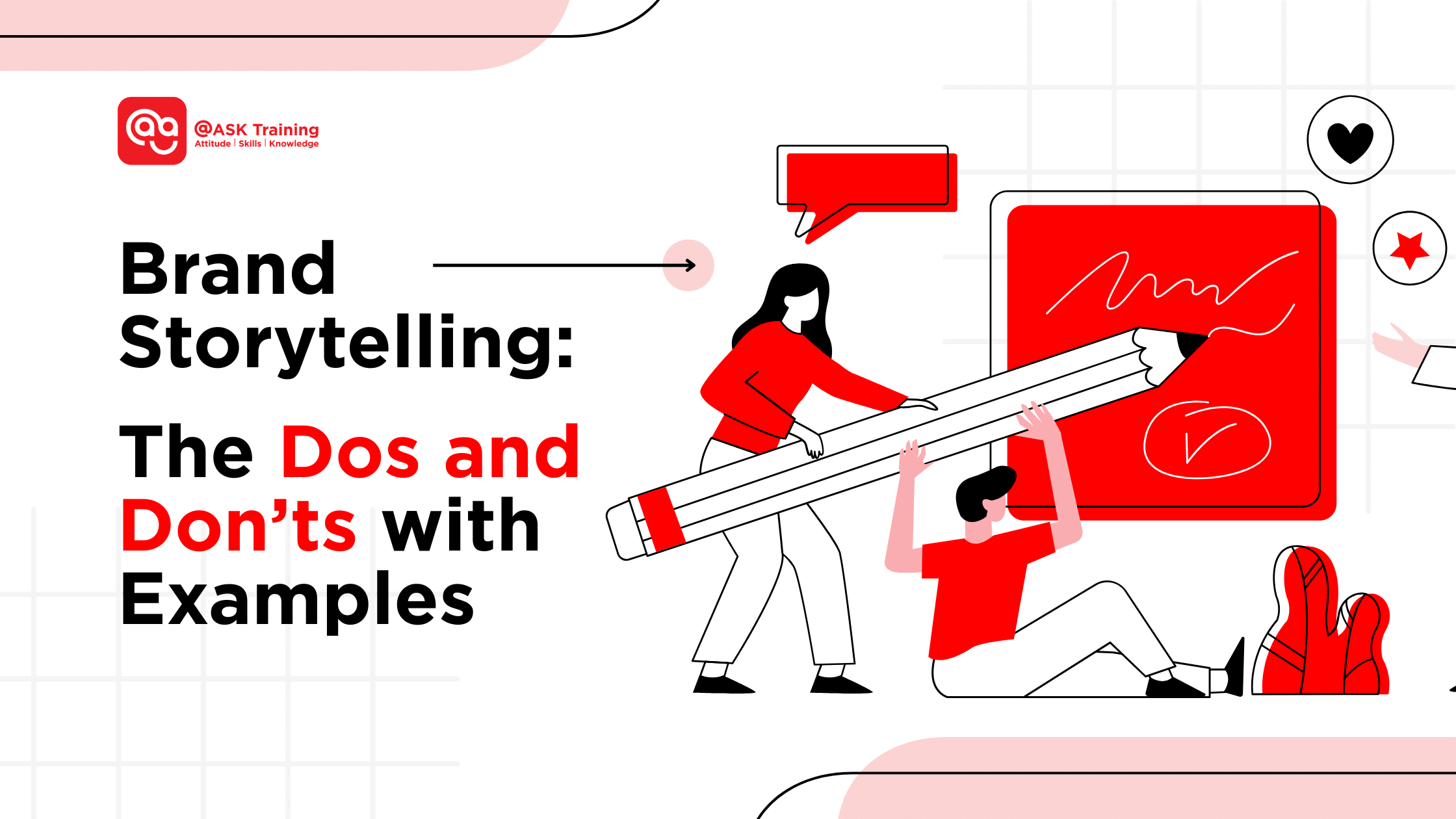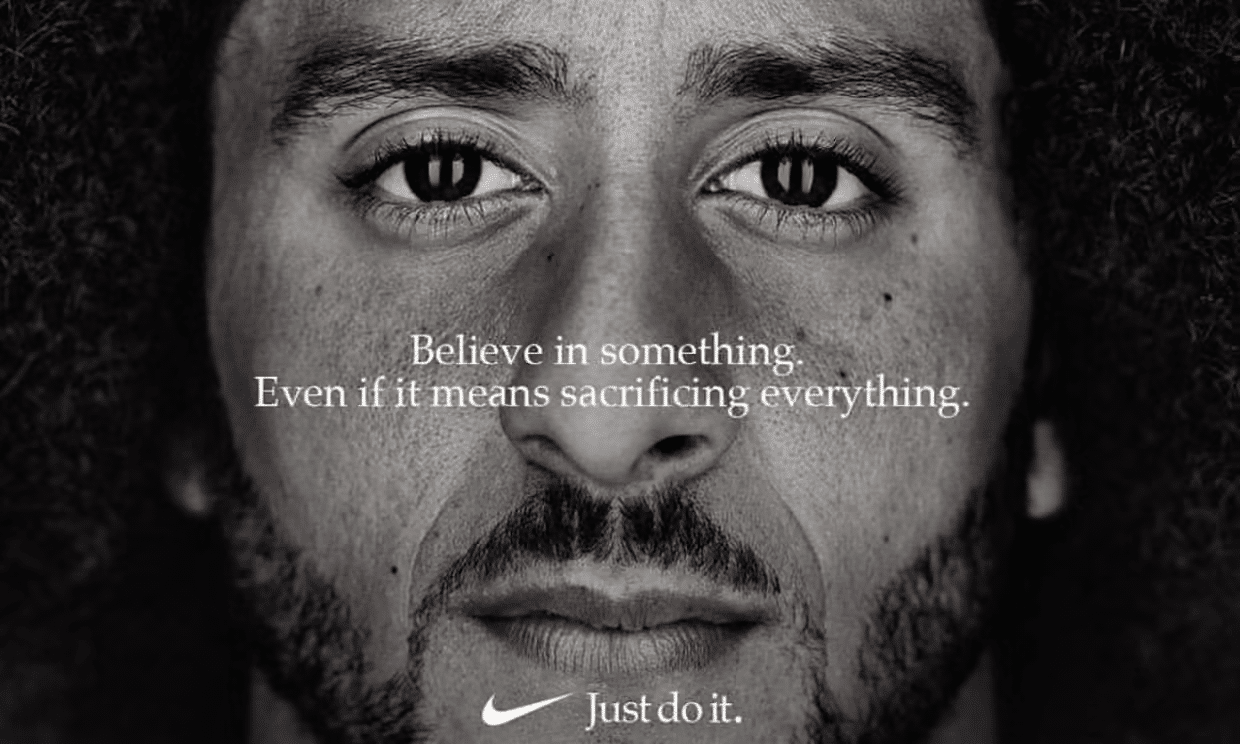In today’s hyper-competitive marketplace, where consumers are inundated with choices, brand storytelling has emerged as a critical tool for differentiation.
Brand storytelling is the art of using narrative to connect your brand with customers on an emotional level. It goes beyond listing product features—it’s about crafting a compelling identity that makes your brand memorable, relatable, and human.
It’s not just about selling a product or service—it’s about creating an emotional connection with your audience, building trust, and fostering long-term loyalty.
But how do you craft a brand story that truly resonates? And what common mistakes should you avoid?
This article will guide you through the dos and don’ts of brand storytelling, provide actionable tips, and share real-life examples to help you create narratives that connect with your audience on a deeper level.
Whether you’re a marketing professional, brand manager, or small business owner, this guide will equip you with the tools to tell your brand’s story effectively and authentically.
Why Brand Storytelling Matters
Before we dive into the how, let’s talk about the why. Storytelling is hardwired into human psychology. From ancient cave paintings to modern-day Netflix series, stories have always been a way for us to make sense of the world, share experiences, and connect with others.
For brands, storytelling is a way to:
- Stand out in a crowded market: A compelling story differentiates your brand from competitors.
- Build emotional connections: Stories evoke emotions, which are key to building trust and loyalty.
- Communicate values: A well-crafted story can convey your brand’s mission, vision, and values more effectively than a list of features.
- Drive customer engagement: Stories are memorable and shareable, making them a powerful tool for engagement.
Now that we’ve established the importance of storytelling, let’s move on to the brand story checklist—a step-by-step guide to crafting a compelling narrative.
Brand Story Checklist: Crafting A Compelling Narrative
Crafting a compelling brand story isn’t just about writing a good narrative, it’s about creating a cohesive, authentic, and emotionally resonant message that aligns with your brand’s values and connects with your audience.
Here’s a checklist to help you get started:
1. Define Your Essence and Values
Your brand’s essence is its core identity—what it stands for and why it exists. Start by articulating your mission, vision, and values in a cohesive narrative.
Example: TOMS Shoes’ mission is simple yet powerful: “With every product you purchase, TOMS will help a person in need.” This clear statement of purpose resonates with consumers who value social responsibility.
Actionable Tip: Write down your brand’s mission, vision, and values. Then, ask yourself: How can I communicate these in a way that feels authentic and relatable?
2. Craft an Authentic Origin Story
Every brand has a beginning. Share the real journey of your brand, including the challenges and triumphs.
Example: Eu Yan Sang masterfully evolved its 1879 origin story—founded by a tin miner treating coworkers with herbal remedies—from a traditional TCM narrative into modern wellness positioning. While preserving heritage elements like vintage packaging, it rebranded ancient remedies as solutions for contemporary stressors (e.g., adaptogenic teas for professionals), proving even century-old brands must adapt their stories to stay relevant without losing authenticity.
Actionable Tip: Reflect on your brand’s journey. What challenges did you face? What inspired you to start? Use these insights to craft a genuine origin story.
3. Align with an Archetype
Brand archetypes are universal character types that resonate with human psychology. By aligning your brand with an archetype, you can create a narrative that feels familiar and compelling.
Example: Charles & Keith Singapore embodies the Explorer archetype—bold, trendsetting, and globally minded. Their designs cater to adventurous, independent women who see fashion as a form of self-discovery.
Actionable Tip: Choose an archetype that aligns with your brand’s identity and resonates with your target audience.
4. Build Emotional Connections
Stories that evoke emotions are more likely to be remembered and shared. Humanise your brand by showcasing the people behind it or highlighting customer stories.
Example: Dove’s Real Beauty Campaign features real people, not models, challenging conventional beauty standards and promoting self-esteem.
Actionable Tip: Identify your audience’s emotional triggers and craft stories that evoke those feelings.
5. Maintain Consistency Across Channels
Your brand story should be woven into all forms of content, from social media to email campaigns. Consistency reinforces your narrative and builds trust.
Example: Apple’s story of innovation and creativity is consistently reflected in its product launches, advertisements, and even its retail stores.
Actionable Tip: Audit your content across all channels to ensure your brand story is consistently communicated.
6. Engage Employees with the Brand Story
Your team should be your biggest advocates. Communicate the narrative internally to align everyone with your mission.
Example: Klook’s vibrant culture is centered around creating unforgettable work moments. The company emphasizes dynamic, fun-loving, and energetic teamwork, often celebrating milestones and achievements.
Actionable Tip: Share your brand story with your team and encourage them to embody it in their work.
7. Use Visual Storytelling
Visuals can enhance your narrative and make it more engaging. Use images, videos, or infographics to bring your story to life.
Example: Coca-Cola’s holiday ads use heartwarming visuals to create a sense of unity and joy.
Actionable Tip: Invest in high-quality visuals that align with your brand’s story and values.
8. Focus on Customer-Centric Stories
Show how your brand improves customers’ lives and aligns with their values.
Example: Airbnb’s stories focus on the unique experiences of its hosts and guests, emphasising connection and belonging.
Actionable Tip: Highlight customer testimonials and success stories to show the real-world impact of your brand.
9. Monitor, Adapt, and Measure Impact
Regularly assess how your story is received and be ready to adapt as your brand evolves.
Actionable Tip: Use tools like Google Analytics and social media insights to track engagement and brand perception.
10. Content Ideation
Use tools like ContentShake to generate ideas that align with your brand narrative.
Actionable Tip: Create a content calendar to plan and organise your storytelling efforts.
Here’s a summary of the checklist:
Now that you have a roadmap for crafting your brand story, let’s dive into the dos and don’ts of brand storytelling.
The Dos and Don’ts of Brand Storytelling
Crafting a compelling brand story requires more than just creativity—it requires strategy and awareness of what works and what doesn’t.
Here are the key dos and don’ts to keep in mind as you develop your brand narrative.
The Dos
1. Forge Emotional Bonds: Effective storytelling goes beyond product features—it touches the heart.
- Example: Coca-Cola’s holiday ads create a sense of unity and joy, illustrating how shared moments can become brand moments.
- Why It Works: By focusing on universal emotions like happiness and togetherness, Coca-Cola creates a strong emotional connection with its audience.
- Takeaway: Identify your audience’s emotional triggers and craft stories that evoke those feelings.
2. Embrace Authenticity: Share your brand’s real journey, including the struggles.
- Example: Patagonia’s narrative resonates because it’s genuine, showcasing real-world activism rather than just a corporate image.
- Why It Works: Consumers value transparency and authenticity. By sharing its commitment to environmental causes, Patagonia builds trust and loyalty.
- Takeaway: Be transparent about your brand’s challenges and how you’ve overcome them.
3. Mirror Your Brand Values: Stories should reflect what your brand stands for.
- Example: TOMS Shoes tells a story of giving back with every purchase, creating a narrative of social impact.
- Why It Works: TOMS’ story aligns with its mission, making it easy for consumers to understand and support its values.
- Takeaway: Ensure every story you tell reinforces your brand’s core values.
The Don’ts
1. Don’t Exploit Social Issues: Pepsi’s Kendall Jenner ad attempted to connect with social movements but was criticised for trivialising serious issues.
- Why It Failed: The ad was seen as tone-deaf and opportunistic, leading to backlash from consumers and activists.
- Takeaway: If you’re addressing social issues, do so with care and authenticity. Ensure your message aligns with your brand’s values and resonates with your audience.
2. Avoid Trying to Appeal to All: Oldsmobile’s campaign with Ringo Starr tried to broaden its appeal but ended up alienating its core demographic.
- Why It Failed: By trying to appeal to everyone, Oldsmobile lost its identity and failed to connect with its loyal customers.
- Takeaway: Focus on your target audience and craft stories that resonate with them specifically.
3. Don’t Miss the Mark on Audience: Chevrolet’s Cruze campaign aimed at millennials backfired by perpetuating stereotypes.
- Why It Failed: The campaign relied on outdated stereotypes, making it feel inauthentic and out of touch.
- Takeaway: Research your audience thoroughly to avoid tone-deaf messaging. Understand their values, preferences, and pain points.
Here’s a quick recap:
To truly understand the power of brand storytelling, let’s look at some notable examples of brands that have mastered the art.
Notable Examples of Successful Brand Storytelling
Learning from the best is one of the most effective ways to improve your own brand storytelling techniques. Here are three iconic examples of brands that have nailed their narratives and the lessons you can take away from their success.
Singapore Brands
1. Charles & Keith
(Source: Charles & Keith)
Story: Founded in 1996 by brothers Charles and Keith Wong, the Singaporean label disrupted the industry by making runway-inspired designs accessible to everyday women. Their story celebrates the modern, confident woman who desires sophistication without the intimidating price tag of luxury houses.
Why It Works: Its “Explorer” archetype, sleek consistency, and campaigns like Walk Your World make customers feel part of an aspirational journey.
Lesson Learned: Affordable brands can feel premium through strong storytelling and visual identity.
2. TWG Tea
(Source: TWG Tea)
Story: Despite being founded in 2008, TWG Tea crafted an elaborate heritage story dating back to 1837, positioning itself as custodians of Singapore’s tea trading legacy while offering modern luxury experiences.
Why It Works: The brand created instant credibility through carefully constructed historical references. They elevated tea drinking from a simple beverage to a sophisticated lifestyle choice. Every detail, from packaging to tearoom decor, reinforced their premium positioning.
Lesson Learned: TWG Tea demonstrates how heritage can be strategically developed through storytelling. Their approach proves that premium experiences justify higher price points and that meticulous consistency builds authentic brand perception.
3. Ya Kun Kaya Toast
(Source: Ya Kun Kaya Toast)
Story: What began as a humble coffee stall in 1944 has grown into a beloved Singaporean institution, with Ya Kun’s story deeply rooted in the nation’s kopitiam (coffee shop) culture and traditional breakfast rituals.
Why It Works: Ya Kun maintained its authentic preparation methods and nostalgic ambiance while modernising operations for scalability. They positioned themselves as keepers of Singapore’s food heritage, with their signature kaya toast and soft-boiled eggs becoming iconic representations of local breakfast culture.
Lesson Learned: Ya Kun shows the power of staying true to one’s roots while carefully evolving. Their success comes from balancing tradition with modern business practices and turning simple food into cultural symbols that resonate emotionally with both locals and tourists.
International Brands
1. Nike’s “Just Do It”
Nike’s Just Do It Campaign (Source: The Guardian)
Story: Nike’s storytelling revolves around inspiring narratives of athletes overcoming obstacles, embodying the ethos of perseverance and empowerment.
Why It Works: Nike’s stories resonate because they tap into universal themes of struggle and triumph, inspiring its audience to push their limits.
Lesson Learned: Align your brand story with universal human experiences to create a narrative that resonates across cultures and demographics.
2. Apple’s Innovation Story
Apple Inclusion & Diversity (Source: Apple)
Story: Apple’s brand story is one of innovation from humble beginnings, focusing on how their products challenge the status quo and empower creativity.
Why It Works: Apple positions its customers as part of a revolutionary journey, making them feel like they’re part of something bigger.
Lesson Learned: Position your audience as the hero of your story. Show how your brand empowers them to achieve their goals.
3. Dove’s Real Beauty Campaign
Dove’s Real Beauty Pledge (Source: Dove)
Story: Dove shifted beauty narratives by showcasing real people, challenging conventional beauty standards, and promoting self-esteem.
Why It Works: Dove’s campaign resonated because it addressed a real societal issue and aligned with its audience’s values.
Lesson Learned: Use your brand story to advocate for a broader social message that aligns with your audience’s values.
Brand storytelling is more than just a marketing tactic, it’s a way to connect with your audience on a deeper level. By following the dos and don’ts outlined in this article and using the brand story checklist, you can craft a narrative that resonates, builds trust, and fosters loyalty.
Wrapping Up
As we wrap up, let’s revisit the key takeaways and encourage you to take the next steps in crafting your brand’s story.
- Storytelling Differentiates: Helps your brand stand out and connect deeply with your audience.
- Authenticity Builds Trust: Share real journeys, including challenges, to create genuine connections through authentic narratives.
- Emotions Drive Engagement: Focus on universal emotions like joy, struggle, and triumph to make stories memorable.
- Align with Brand Values: Ensure every story reflects your mission, vision, and values.
- Consistency is Key: Maintain a cohesive narrative across all channels for trust and recognition.
- Learn and Adapt: Study successful brands, avoid common pitfalls, and evolve your story as needed.
Remember, the key to successful storytelling lies in authenticity, emotional connection, and consistency. Start by understanding your audience, defining your brand’s essence, and telling stories that reflect your values.
Implement these tips and watch your brand’s narrative come to life!
Ready to Take Your Brand Storytelling to the Next Level?
Put your brand storytelling out there with @ASK Training’s Content Creation courses! Designed to help you craft compelling narratives, engage your audience, and elevate your brand.
Our courses include:
- Digital Content Creation: Equip yourself with the skills to create, strategise and manage content that resonates.
- Copywriting & Content Writing: Craft authentic, personalised content that aligns with your brands goals and audiences.
- Advanced Digital Content Marketing: Learn advanced content strategy, creation, distribution and optimisation for different platforms.
Enrol with us today and start crafting stories that matter!
Related Courses
- WSQ Copywriting and Content Writing
- WSQ Digital Content Creation
- WSQ Advanced Digital Content Marketing
◆◆◆









